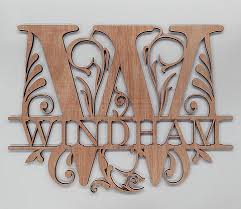The Art of Laser Engraving
Laser engraving is a versatile and precise technique that has revolutionized the world of customization and personalization. By using a high-powered laser beam to etch designs, text, or images onto various materials, laser engraving offers unparalleled precision and detail.
One of the key benefits of laser engraving is its ability to work with a wide range of materials, including wood, metal, glass, acrylic, leather, and more. This versatility allows for endless possibilities in creating unique and personalized items such as jewelry, signage, awards, promotional products, and decorative pieces.
Unlike traditional engraving methods that rely on physical tools to carve into surfaces, laser engraving is non-contact and non-invasive. This means that delicate materials can be engraved without the risk of damage or distortion. The precision of laser technology also ensures consistent results with intricate designs and fine details.
Businesses across various industries have embraced laser engraving for its efficiency and quality. From customizing products with logos or branding to creating intricate patterns on surfaces, laser engraving offers a cost-effective solution for mass production while maintaining a high level of customization.
Furthermore, the environmental impact of laser engraving is minimal compared to traditional methods that produce waste or require harsh chemicals. Laser technology is energy-efficient and produces clean results without the need for additional resources.
Whether you’re looking to add a personal touch to gifts or create professional-grade products with intricate designs, laser engraving provides a seamless solution for achieving precise and stunning results. The artistry of laser engraving continues to inspire creativity and innovation in various industries, making it a valuable tool for artisans, designers, manufacturers, and hobbyists alike.
Six Essential Tips for Achieving Optimal Results in Laser Engraving
- Choose high-quality materials for better engraving results.
- Ensure proper ventilation when working with laser engraving to avoid inhaling fumes.
- Calibrate the laser settings correctly to achieve the desired depth and clarity of engraving.
- Regularly clean the laser lens and machine bed for optimal performance.
- Experiment with different power and speed settings to find the best engraving outcome for different materials.
- Always double-check your design and positioning before starting the laser engraving process.
Choose high-quality materials for better engraving results.
When opting for laser engraving, selecting high-quality materials is crucial for achieving superior results. The precision and detail of the engraving process are greatly influenced by the quality of the material being engraved. High-quality materials not only enhance the clarity and sharpness of the engraved design but also ensure durability and longevity. By choosing top-notch materials, you can elevate the overall appearance and effectiveness of your laser-engraved creations, resulting in a finished product that truly stands out.
Ensure proper ventilation when working with laser engraving to avoid inhaling fumes.
When working with laser engraving, it is crucial to prioritize safety by ensuring proper ventilation in your workspace. Adequate ventilation helps to prevent the inhalation of potentially harmful fumes that may be produced during the engraving process. By maintaining good airflow and using ventilation systems or exhaust fans, you can create a healthier work environment and reduce the risk of exposure to airborne particles. Prioritizing ventilation when laser engraving not only safeguards your well-being but also promotes a safe and productive workspace for optimal results.
Calibrate the laser settings correctly to achieve the desired depth and clarity of engraving.
Calibrating the laser settings correctly is crucial when it comes to achieving the desired depth and clarity of engraving. By fine-tuning parameters such as power, speed, and frequency, you can ensure that the laser interacts with the material in a precise manner, resulting in sharp details and consistent engraving depth. Proper calibration not only enhances the quality of the finished product but also minimizes errors and rework, ultimately saving time and resources in the laser engraving process.
Regularly clean the laser lens and machine bed for optimal performance.
Regularly cleaning the laser lens and machine bed is essential for maintaining optimal performance in laser engraving. A clean lens ensures that the laser beam remains focused and accurate, resulting in crisp and precise engraving. Similarly, keeping the machine bed free of debris and residue helps prevent interference with the engraving process, ensuring consistent results. By incorporating regular maintenance practices such as cleaning the lens and machine bed, users can prolong the lifespan of their equipment and achieve high-quality engravings with efficiency and reliability.
Experiment with different power and speed settings to find the best engraving outcome for different materials.
Experimenting with different power and speed settings is key to achieving optimal results when laser engraving on various materials. By adjusting the power and speed parameters, you can fine-tune the engraving process to suit the specific characteristics of each material, such as density, hardness, and color. This trial-and-error approach allows you to discover the ideal combination that produces crisp, detailed engravings while minimizing any potential damage or discoloration. Whether working with wood, metal, acrylic, or other substrates, exploring different settings will help you unlock the full potential of laser engraving for your projects.
Always double-check your design and positioning before starting the laser engraving process.
Prior to initiating the laser engraving process, it is crucial to meticulously review both your design and its positioning. Taking the time to double-check ensures that your desired outcome is accurately translated onto the material with precision and clarity. By verifying these elements beforehand, you can avoid potential errors or misalignments, ultimately leading to a flawless and successful laser engraving result.

No Responses